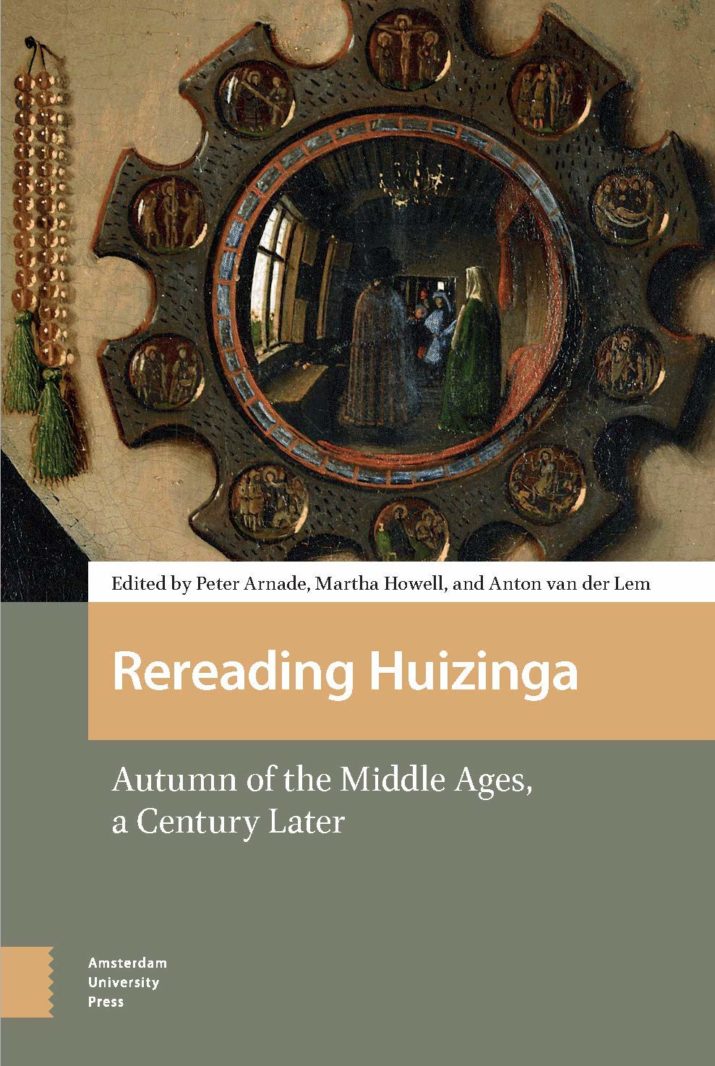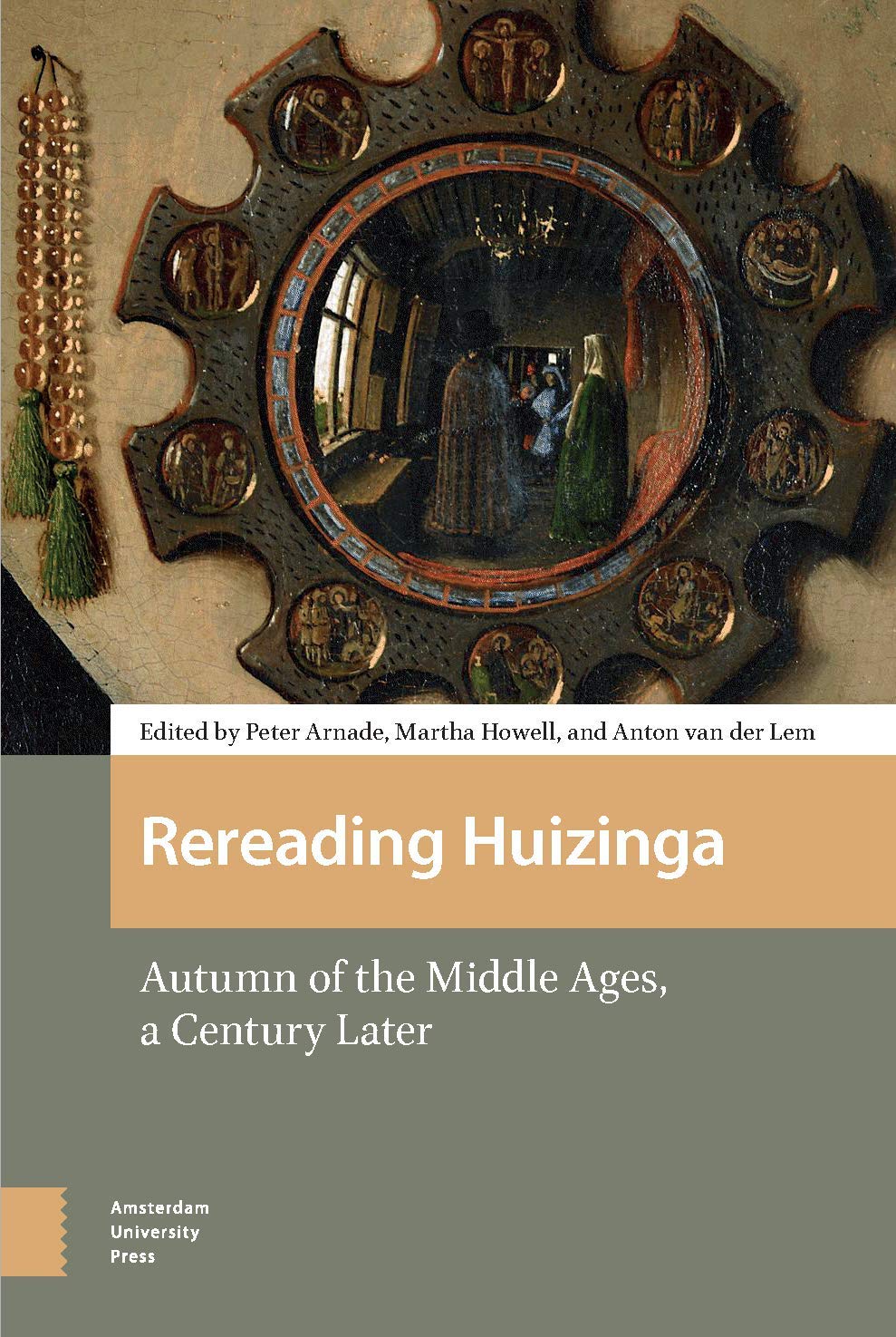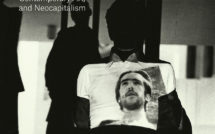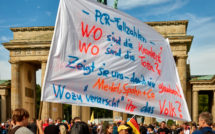
Rereading Huizinga: Autumn of the Middle Ages, a Century Later edited by Peter Arnade, Martha Howell, and Anton van der Lem

In 1919, the Dutch historian Johan Huizinga published Herfstij der Middeleeuwen, a study of the “form of life, thought and art in France and the Netherlands in the fourteenth and fifteenth centuries.” Huizinga sketched a portrait of the late medieval Burgundian territories, decadent in their rituals, emotional in their practice of religion, and elaborate in their chivalric culture. His aim was to bring to life the world of the Van Eycks. Concerned with the Valois court in Burgundian France and the Low Countries, Huizinga called critical attention to Burgundian noble patronage, courtly rituals, and artistic commissions that supported the formation of identity as the Middle Ages came to a close.
First translated into English in 1924, the book is known as both The Waning of the Middle Ages and The Autumn of the Middle Ages. Huizinga’s text was later translated into various European languages throughout the 1920s and then the 1930s, ultimately becoming key reading in studies of the late medieval Low Countries and France across disciplines as well as for the wider public. Each new translation and edition reinvigorated Huizinga’s work and retained its place in considerations of the region and period.
Huizinga and his publication were products of their time. In its focus on northern Europe at the end of the Middle Ages, Huizinga offered a counterpoint to Jacob Burckhardt’s Civilization of the Renaissance in Italy (1860). Moreover, rising nationalist sentiment across Europe shaped the production of history in the nineteenth and twentieth centuries. The artworks that inspired Huizinga’s book played a significance role in nationalist endeavors; the famous exhibition of early Netherlandish painting, Les Primitifs flamands, opened in Bruges in 1902, harnessed the paintings of the fifteenth-century Low Countries to support Flemish nationalism. The French responded with the exhibition Les Primitifs français in 1904.Like other scholars of his day, including the Belgian historian Henri Pirenne, Huizinga wrestled with how his historical project supported or resisted such nationalist causes. Whereas Pirenne’s History of Belgium, published in seven volumes between 1899 and 1932, ultimately reinforced an idea of a distinct Belgian nation state, Huizinga wrote against nationalism, thinking instead of a medieval period across regions.
Rereading Huizinga allows readers to examine once more Huizinga’s text, taking a fresh look at Autumn’s contributions to the fields of history, art, and literature. Edited by Peter Arnade, Martha Howell, and Anton van der Lem, this present volume was published to coincide with Autumn’s centennial, stemming from a workshop held in New York in 2016. Chapters by thirteen authors across various disciplines offer a fresh perspective on this classic book, nuancing the reductive interpretation of Huizinga’s text as an elegy for an overwrought culture. The editors’ introduction lays out the attractions and issues of Huizinga’s text: the idiosyncrasy of its writing, its lack of attention to economics and social class, and its general disdain for religious practice in the period. Organized into three sections, this volume examines the interpretation of late medieval Northern Europe, the sources and arts in Autumn, and Autumn’s place in the historiography.
In the first section, Andrew Brown revisits the element of play in Autumn. Although the play element of culture is the central concern of Huizinga’s 1938 Homo ludens, Brown reexamines the place of play in Autumn, suggesting that the connection between play, ceremony, and society is an avenue for further exploration of the life of the Burgundian court. While Burgundian decadence and overly complex ritualization are the focus of much of the reception of Huizinga’s work, Brown instead draws attention to the nuances of Autumn, where play is an element of chivalric rituals.
In addition to chivalry, Autumn examines late medieval devotional practice, the subject of Walter Simons’s chapter. Simons demonstrates how Huizinga shaped further study of death imagery, funeral rites, and the histories of emotions and senses. The discussion of religion in Autumn has contributed to the text’s uneven reception in Belgium and the Netherlands, often divided along Catholic and Protestant lines. Later scholars have often understood Huizinga’s critique of emotional religious practices through the lens of his strict Mennonite upbringing. Simons argues Autumn should be understood in the context of not only Huizinga’s childhood but also his academic study of Buddhism and comparative religion. Jan Dumolyn and Élodie Lecuppre-Desjardin co-author a chapter on one of the most often remarked upon gaps in Huizinga’s text: its lack of analysis of urban culture in favor of the courtly milieu. The authors argue that Huizinga’s vision of the Burgundian Low Countries sprang from attention to chivalry and Christianity, a focus that pushed urban history to the margins. As such, Huizinga understood even commercial and urban developments as stemming from the court. Autumn did not aim to be an histoire totale, but rather an “aesthetic vision” (82) of the period. Continuing this theme of overlooked aspects of Burgundian culture in Autumn, Jun Cho writes about the “forms behind the vormen(forms)” (85) to argue that Huizinga’s cultural forms, analyzed in the context of the court, can likewise be understood with respect to commercial and political aspects of society. In this way, Huizinga’s analysis can extend beyond the court, such as the virtue of magnificence understood in relation to commerce in the same period. In the final chapter of Part One, Marc Boone analyzes Huizinga’s relationship to Pirenne. Colleagues and interlocutors, both men studied the Valois courts yet came to distinct conclusions about whether a Burgundian State did indeed exist. For Pirenne, the Burgundian Low Countries foretold of Belgian unification, whereas Huizinga envisioned a much more limited view of the Burgundian state, taking shape only after the death of Charles the Bold in 1477. At stake were issues of Belgian and Dutch nationalism in the early twentieth century.
Part Two turns our attention to the art, literature, and sources that Huizinga studied. It begins with two contributions by art historians. Diane Wolfthal examines Huizinga’s understanding of Netherlandish art and his influence on the field. Art is central to his book, although his interpretations are highly personal. Wolfthal finds limited evidence for early art historical reception, yet art historians, such as Erwin Panofsky, saw a beginning in early Netherlandish painting, whereas Huizinga only saw the end of medieval painting. Both criticized and recognized as important, Autumn was significant in calling attention to Valois patronage and in training an interdisciplinary lens on the art of this period. Drawing us away from the Low Countries, Larry Silver examines late medieval Germany. Focusing on Maximilian I, who gained control of Burgundian territories through their first wife, Silver demonstrates that the emperor took on Burgundian staging and chivalry that Huizinga describes to formulate the Holy Roman Empire.
This section concludes with two contributions on the “making” (169) of Autumn. First, Graeme Small analyzes Huizinga’s selection of narratives sources, which he quoted and paraphrased liberally in Autumn. However, as Small shows, Huizinga was selective in his choice of authors, relying on French chronicles with published transcriptions and largely overlooking Dutch and Latin sources. Small understands Huizinga’s particular reliance on narrative sources as stemming from his aim to understand the past (171) and bringing it to life. Continuing in this theme, Anton van der Lem offers insight into how Huizinga approached and organized his sources. Based on research in the author’s personal archives, van der Lem reveals Huizinga’s note-taking practices using slips of paper with quotations organized by theme. Additionally, van der Lem provides an important summary of Huizinga’s life, especially under Nazi occupation, which is not discussed elsewhere in this volume. These two chapters demonstrate how Autumn anticipated the interdisciplinarity of medieval studies later in the twentieth century.
The final section examines the legacy of Huizinga and his place in the historiography. First, Carol Symes considers Huizinga’s relationship to European medievalism. Symes returns to Huizinga’s opposition to nationalism through his historical project and places Autumn in the context of the European wars of the late nineteenth and early twentieth centuries. Huizinga wrote as European national identities increasingly fused with interpretations of the medieval past, such as the French revival of Joan of Arc as a national and military hero. Within the Low Countries, the Flemish Movement claimed a distinct history from Francophone regions, turning to the medieval past to create modern legitimacy. Symes argues that Autumn can be understood as a critique of such medievalisms. This perspective further offers a distinct contemporary resonance for Autumn amid renewed medievalisms in Europe today.
The next two chapters examine how we can understand Huizinga in the field. Birger Vanwesenbeeck proposes him as a “theorist of lateness” (245). He reassesses what ‘late’ means in terms of Huizinga’s writing, considering Huizinga in relationship to Theodor Adorno and the symbolist era. Meanwhile, Peter Arnade questions whether we might understand Huizinga as an “anthropologist avant la lettre” (257). In his focus on overarching structures and rituals of the later Middle Ages, as well as on symbols and the cultural imagination, Huizinga approximated anthropological thinking. While anthropology was still developing as a field at the turn of the twentieth century, Huizinga’s cultural theory and methodology resonate with the field.
As a final discussion of Huizinga and historiography Myriam Greilsammer reassesses the reception of Autumn in France, especially among the Annales school. Although the relationship between the Annales school and Huizinga is often noted, Greilsammer demonstrates that Autumn’s reception was not uniformly positive and is more complex than generally thought. She examines Marc Bloch’s intellectual disagreements with Huizinga as well as division over scholarly territories. Greilsammer further analyzes key differences in their approach to studying society, particularly given Huizinga’s focus on the court. The Annales school and Huizinga nevertheless share numerous resonances in the longue durée perspective, anti-positivist attitude, and anti-nationalist sentiment.
Finally, an epilogue by Willem Otterspeer celebrates the rereading of Huizinga. This chapter offers a personal ending to the volume, honoring the pleasure of returning to a text and the insights it can offer over time.
Overall, Rereading Huizinga provides a variety of nuanced perspectives on both the historian and on his writing. This volume is an important reconsideration of a key publication on late medieval history, of interest to scholars in a variety of disciplines as well as time periods. Rereading Huizinga is as much a history of the twentieth century as of the fifteenth. Several themes recur throughout the chapters that point to the broader importance of revisiting Autumn. Many of the authors return to the question of source materials, of how our notions of history are formed and written. The authors frequently discuss Huizinga’s relationship to twentieth-century nationalism in Europe and consider his resistance to it through his historical practice, reflecting how history today likewise grapples with rising nationalist sentiments. Chapters frequently point to the questions and fields of study for which Huizinga’s work laid a foundation, notably the history of emotions and senses, the aesthetics of statecraft, and interdisciplinary methodologies. This thoughtful collection of essays shines a spotlight on Huizinga’s work, demonstrating Autumn’s continuing relevance across fields and suggesting the stakes of writing history.
Elizabeth Rice Mattison is the Andrew W. Mellon Assistant Curator of Academic Programming at the Hood Museum of Art at Dartmouth College. She recently completed her PhD in art history at the University of Toronto and is a specialist in the art and architecture of the fifteenth- and sixteenth-century Low Countries.
Rereading Huizinga: Autumn of the Middle Ages, a Century Later
Edited by Peter Arnade, Martha Howell, and Anton van der Lem
Publisher: Amsterdam University Press
Hardcover/ 363 pages/ 2019
ISBN: 9789462983724




